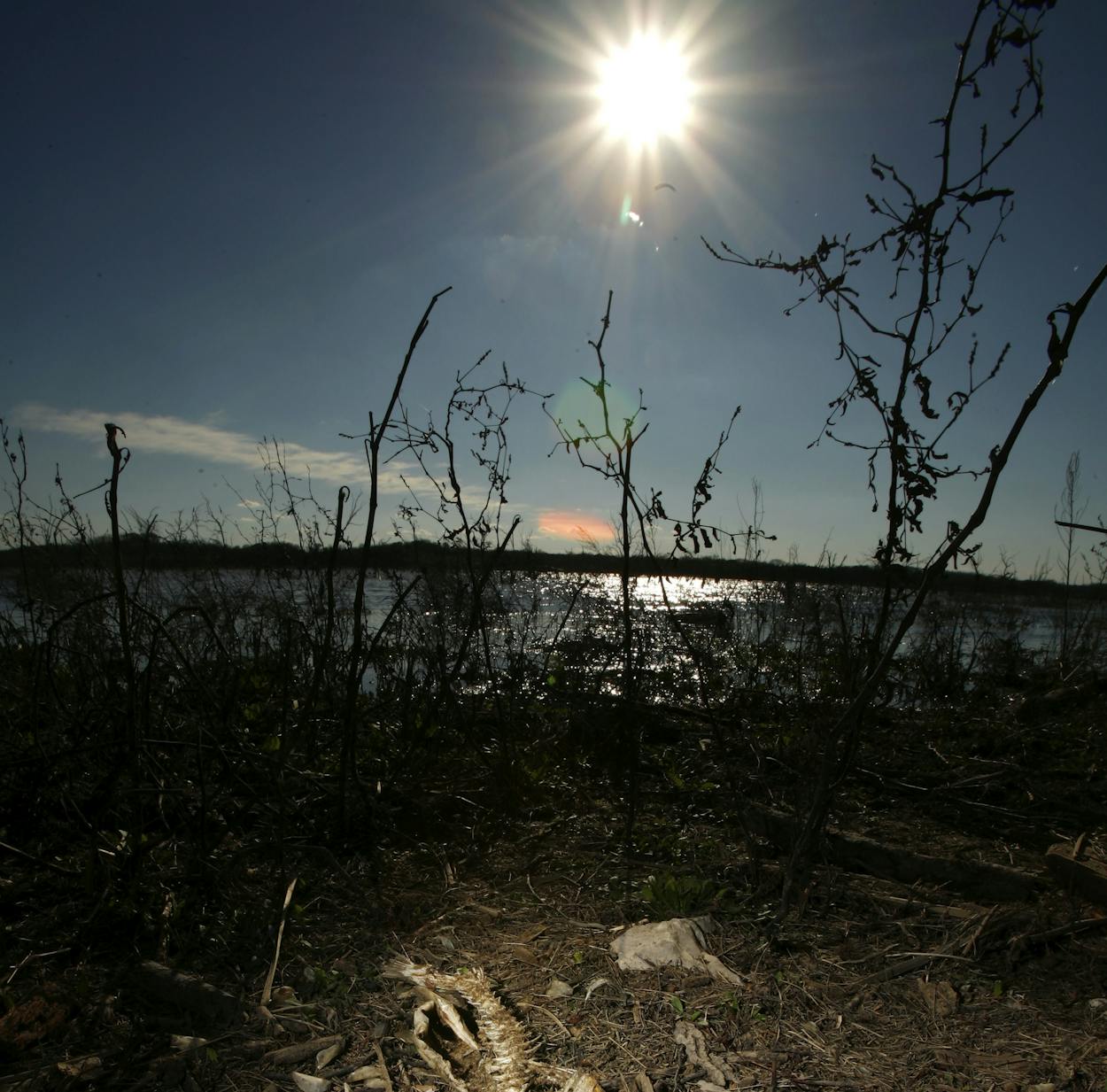The current drought has no end in sight, Texas state climatologist John Nielsen-Gammon told the state legislature last week. Texas has received only 68 percent of its average rainfall over the past two years, and 2011 was the driest year on record. Throw in “unpredictable” summer rainfall and a potential reappearance of La Niña in the fall, and we may be on track for the second worst drought in state history.
In 2012, the Texas Water Development Board (TWDB), a public agency created in 1957 immediately after the state’s devastating seven-year-long drought (the worst on record), proposed its ninth State Water Plan analyzing the state’s resources and offering 562 unique water supply projects.
The suggested infrastructure would total $53 billion over the next half-century, with approximately $27 billion needed from the state, according to the TWDB. State Rep. Allan Ritter (R- Nederland), chair of the House Natural Resources Committee, has filed two bills addressing the water issue, HB 4 and HB 11, which would take $2 billion from the state’s Rainy Day Fund to start “a new, dedicated revolving fund” for the Water Plan. Rick Perry agrees.
So, how long will it take to bring a comprehensive water plan online? “It will be a while,” Dr. Dan Hardin, Director of Water Resources Planning, told Texas Monthly Friday. And for many of the proposals, it might be, well, never. “If you catch the authors of the various regional plans in a frank mood,” Nate Blakeslee wrote in “Drawing Straws,” “they will tell you that most of the projects in the plan will never be completed anyway.” (Of the 500 plans compiled in 2007, only 65 have been implemented.)
The plan, Blakeslee wrote, is “essentially a wish list”:
Local authorities want their projects included in the water plan in order to be eligible for a low-interest loan backed by the State of Texas. Making the cut does not guarantee that a project will receive financing, but it has no chance if it doesn’t appear in the plan.
And then another problem with the plan, according to StateImpact‘s Mose Buchele, is that the myriad projects contained in it “remain largely unprioritized.”
Given that the plan, however dreamy it may be, remains the only hope for funding projects, we wanted to bring you back up to speed on the basics:
In the next 50 years…
Population:
Texas’s population is projected to grow by 20.9 million, reaching 46.3 million in 2060 (an 82 percent increase).
Water demand:
In 2060, Texans will need 22 million acre-feet of water per year (a 22 percent increase from 2010).
Water supply:
In 2010, there was 17 million acre-feet of water per year. In 2060, the water supply is projected to decrease to 15.3 million acre-feet.
What exactly are those “562 unique water supply projects”?
Hardin explained that the various proposals can be broken down into three primary categories:
Conservation and Reuse:
These are projects that don’t require developing new water supplies, but instead work to preserve or recycle existing water supplies.
New Infrastructure:
Pipelines and other construction that help communities access and utilize existing water sources.
New Water Development:
In some cases, new water supplies can be created through reservoirs and desalination.
A graphic from the State Water Plan provides a more thorough dissection of the various strategies:

What the 562 unique projects do not include:
Days of Prayer for Rain in the State of Texas.
Three Important Strategies:
1. Water Reuse: While the notion of recycling wastewater may make some a bit queasy, it will be a crucial tool for Texas. “It’s like having a water supply where it rains every day,” Hardin explained. Water reuse can yield potable (safe for drinking) and non-potable water. The Water Plan estimates that water reuse can produce 614,000 acre-feet of water per year by 2060.
Big Spring in West Texas will begin blending treated wastewater with reservoir water to produce two million gallons daily for the surrounding area. Meanwhile, Brownwood is developing a direct-potable reuse system, wherein wastewater is treated and returned directly to city pipes. It will be the only one in the Western Hemisphere.
2. Wellfield Drilling: Amarillo didn’t think it would actually need the Potter County Wellfield for decades, but when its surface water source, Lake Meredith, completely dried up, it became crucial. Completed late last year and funded, in part, by the TWDB, the new wellfield will bring groundwater to city residents through around 70,000 connections.
3. Brackish Groundwater Desalination: TWDB has advised communities to look into brackish groundwater, an underdeveloped resource in our region that is less salty than seawater but too salty to drink. San Antonio is one city that is developing a brackish groundwater desalination program; the project’s first phase is projected to generate an estimated 11 million gallons of water per day.
What Does the Drought Mean For You?
If this drought isn’t going anywhere soon, how is it going to impact daily life for Texans? Hardin said it will hit the state’s agricultural industry, driving up food prices. It may also hurt electricity generation. As The Texas Tribune reported last year, nearly 40 percent of water taken from rivers and lakes nationally is used by power plants in their cooling down processes. In the summer of 2011 drought, two plants nearly shut down, and one large plant reduced operations at night to conserve necessary water.
Of course, the silver-lining to drought conditions is that they teach the public to value water. “Before this, everyone thought water just ran down rivers and was bountiful and free,” Hardin said. “We’re learning that’s not the case, and we need to price it as such.”
- More About:
- Politics & Policy
- Drought
- Rick Perry






